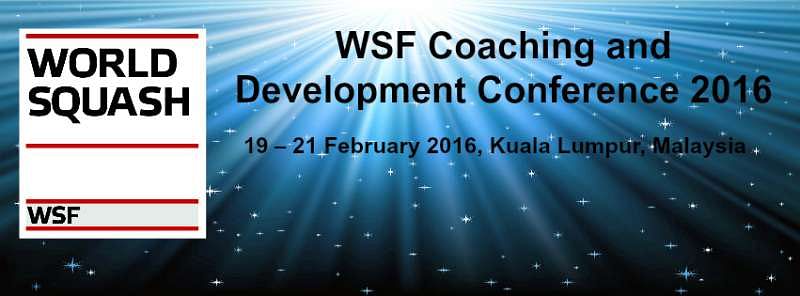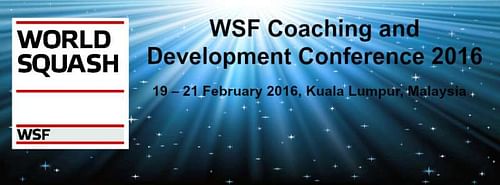
'Life of P', a WSF coaching and development conference in Malaysia

Every once in two years (soon to be made annual) the cream of coaching heads in world squash meet to exchange assessments of the areas of their development, present fresh ideas and plan ahead as part of a long term strategy of developing talents from school level to the professionals. This is part of the World Squash Federation(WSF)'s initiative to keep the sport searching for new frontiers of excellence and delight the sporting fraternity.
This is evolvement. It happens in every sport and depending on the availability of scientific inputs and ideas the development patterns differ. The essence is growth and that perhaps what made Maj S. Maniam, the Director of the WSF development and coaching and the man behind the latest Conference held in Malaysia recently to name the event 'The Life of P' where the 'P'stood for player programmes, peak performances!
For a few days then the squash courts at the Squash Rackets Association of Malaysia in Kuala Lumpur was flush with activities of the people who are behind the players growth and excellence. As Maj Maniam said the whole gamut of coaching was touched upon from the fundamentals to school level requirement and leading up to serving the professional players. Officials from the ten countries in all numbering 60 attended the three-day meet and returned refreshed listening and discussing with experts.
An interesting aspect of such conferences is that the discussions are on every aspect from top to bottom. Leaders in respective fields give their account and there were quite a handful of them and also bring in fresh areas of thoughts, stemming from experience and research, for discussions.
A delightfully new idea that was tabled was this 'single jump test' to decide whether a player needed 'power' or 'strength' training. A single static jump can make a coach learn the requirement and accordingly detail the coaching plans for a player. Power and strength are essential tools of a squash player, one to effect shots and the other for on-court movements. It is in effecting a right blend of the two that a talented player rises to show his or her prowess.
As it happens in a meet of this kind, the interest also centres on coaches who have had opportunities to make a significant impact in the careers of leading players. Shaun Sturgess, an Australian expert who has been working with Malaysian players had a major role in the development of Nicol David, one of the world's best-known player and for many years the undisputed world number one.
There was also a window for former top players to present their views and expertise. Zainal Abidin from Singapore was a former Top-3 world ranked player who was known for his deceptive play on court. Abidin took the audience along with his elaboration on the art of deception that certainly proved an enlightment as was the talk on the essence of mental training by Michel Gagne, a noted expert in this area. A former world class performer Ong Beng Hee of Malaysia gave his insight on what it was working with 'elite players' and what they look forward to in their road to development.
All in all, it was a get-together which was enriching as Cyrus Poncha, the Indian national coach who along with Surbhi Misra had attended the course, put it. "I have had the opportunity to attend several programmes of similar nature before but I would pick this as one which has given me a totally new perspective on coaching," he said.